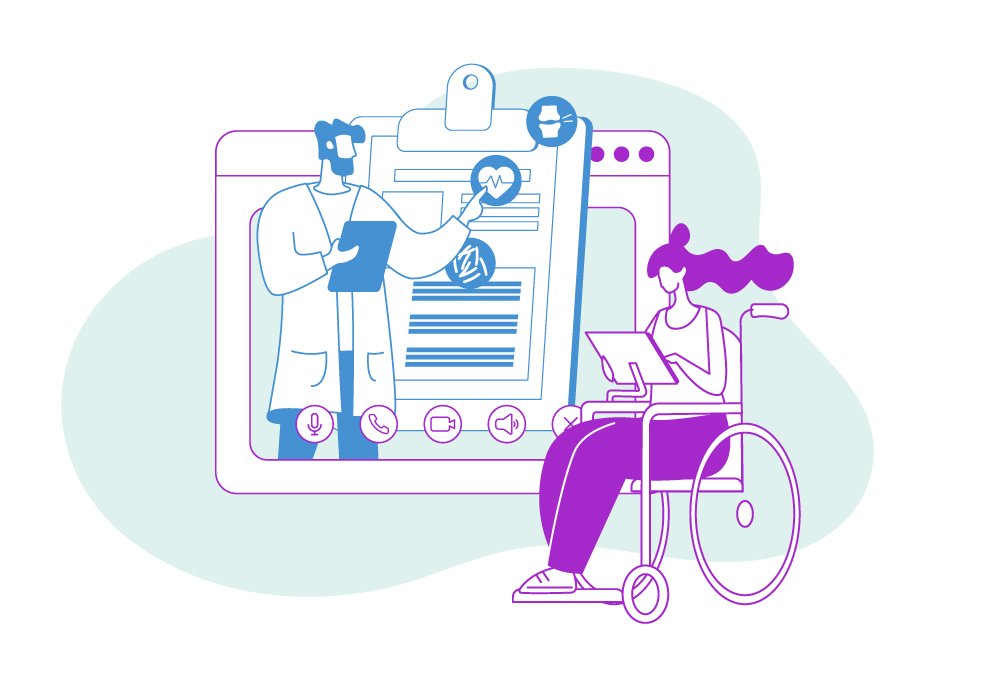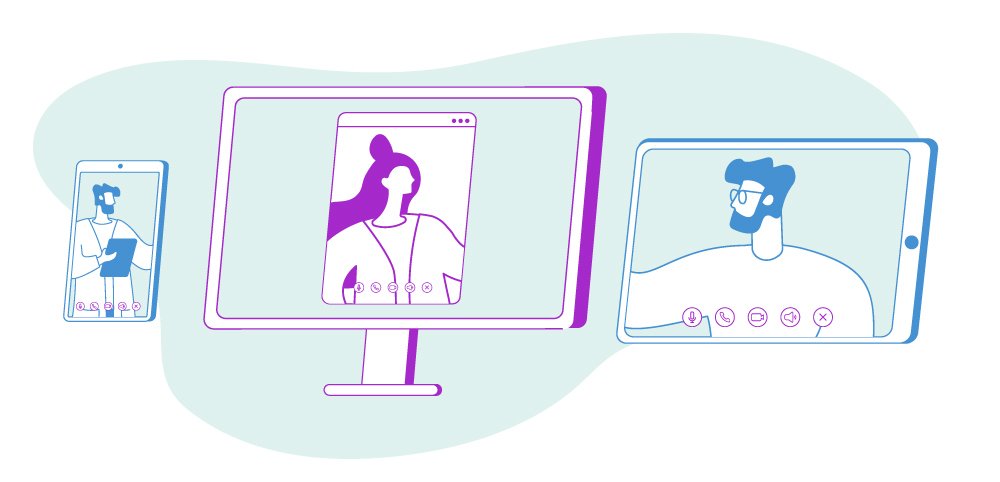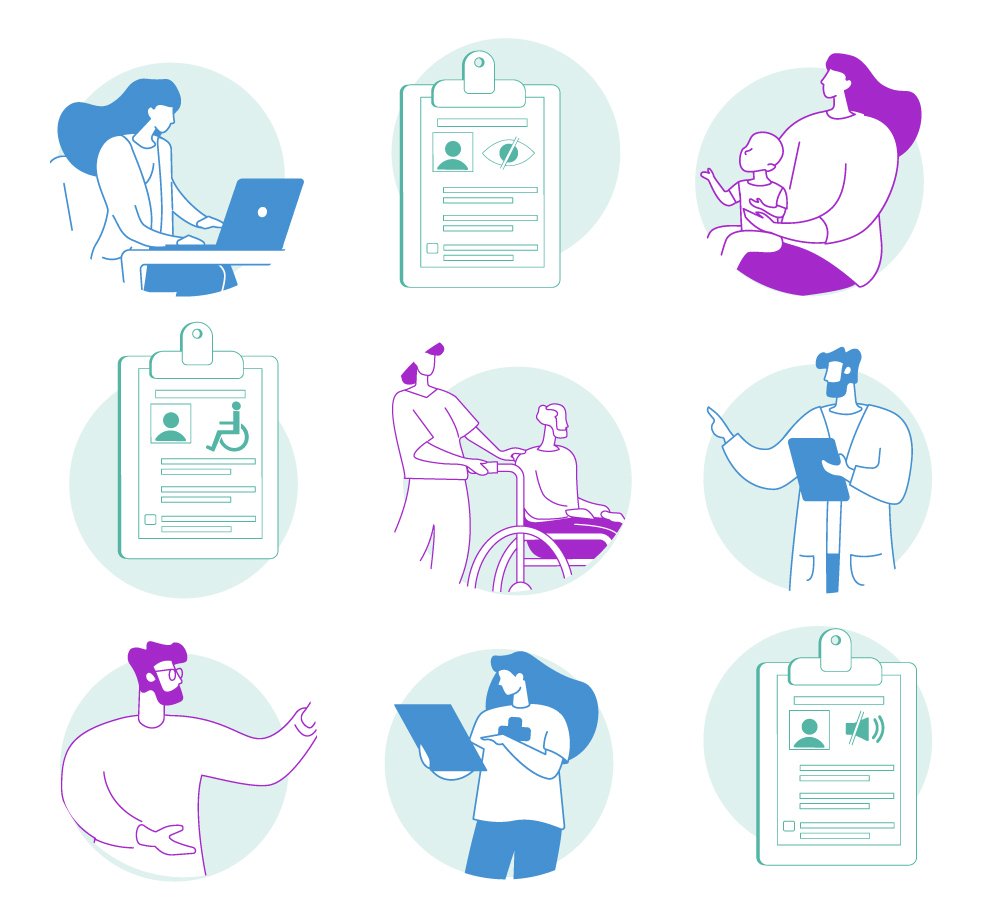In a previous post, Delivering Great Experiences in WebRTC Applications, I shared our commitment to making the interactions in WebRTC applications as seamless as possible, allowing users to achieve their tasks without distraction. However, there’s more on the line with a healthcare application, so an outstanding user experience design (UX) is critical for telehealth. Let’s take a look at the pivotal role WebRTC plays in telemedicine and teletherapy services, as well as the challenges, opportunities and best practices for delivering great experiences in telehealth.
What is Telehealth?
Telehealth refers to the practice of providing medical services remotely, using telecommunications technology. It involves the diagnosis, treatment, and monitoring of patients through audio, video, and other communication tools, allowing healthcare professionals to interact with patients who are geographically distant.
Today, telemedicine plays a vital role in providing accessible, convenient, and cost-effective healthcare. This wasn’t always the case, but the Covid pandemic certainly cemented this role.
What is WebRTC’s role in telehealth?
WebRTC plays a significant role in enabling telemedicine services. It allows real-time communication capabilities directly within web browsers and mobile applications. Some of the features of WebRTC that are particularly for telehealth important include:
- Audio and Video Communication: WebRTC provides the necessary protocols and APIs for secure and reliable real-time audio and video communication between healthcare providers and patients. It ensures high-quality, low-latency connections, facilitating effective remote consultations.
- Data Sharing: WebRTC enables the sharing of medical data, such as patient records, images, and test results, during telemedicine sessions. This allows healthcare professionals to make informed diagnoses and treatment decisions.
- Security and Privacy: WebRTC incorporates encryption and security measures to protect patient data during transmission. It is compatible with making applications HIPAA-compliant.
- Cross-Platform Compatibility: WebRTC is designed to work across different devices and platforms, including desktops, laptops, smartphones, and tablets. This versatility allows patients and healthcare providers to connect seamlessly regardless of their chosen devices or operating systems.
Telehealth user experience challenges
There are a number of particular concerns that must be accounted for when designing telehealth applications.
- Ensuring user privacy and security and consent: Telemedicine involves the transmission and storage of sensitive health data, making privacy and security a significant concern. It’s important to design interfaces that clearly communicate the security measures to build trust with users. Obtaining explicit consent from users for data collection, storage, and sharing is also crucial. There is also a delicate balance between secure architectures and great experiences. WebRTC is really well suited for this, because some of the security is already built in, when used properly.
- Addressing the needs of diverse user groups: Telemedicine caters to a wide range of users, including patients of various age groups, cultural backgrounds, and technological literacy levels. You must consider factors such as language preferences, visual impairments, and cognitive abilities when designing interfaces.
- Ensuring usability for patients with limited technology skills: Designing interfaces that are intuitive, simple, and require minimal technical skills is important. Clear instructions, visual cues, and step-by-step guidance can help patients navigate through the platform easily.
- Creating user-friendly interfaces for medical professionals: Understanding the workflows and requirements of healthcare providers is essential to design interfaces that streamline their tasks, provide quick access to patient information, and facilitate seamless communication. It is also important to understand the context of when and where these interfaces will be used. It is not the same to design an application that is meant to be used during a regular doctor/patient consultation as to design an application that is meant to be used during surgery.
- Balancing automation with personalization in telemedicine experience: Telemedicine platforms often leverage automation and artificial intelligence to enhance efficiency and provide personalized care. However, striking the right balance between automation and personalization can be challenging. While automation can speed up processes, it should not compromise the human touch and empathy that is crucial in healthcare.
Telehealth user experience opportunities
On the flip side, there are also several exciting opportunities, such as:
- Developing innovative solutions for remote healthcare delivery: By leveraging WebRTC technology, we can design intuitive and user-friendly interfaces that facilitate remote consultations, virtual visits, and remote monitoring.
- Improving access to healthcare for underserved communities: Telemedicine can bridge the gap in healthcare access for underserved communities.
- Reducing healthcare costs and increasing efficiency: In addition to reducing the need for in-person visits, unnecessary hospitalizations, and travel expenses, designing interfaces that streamline workflows, automate administrative tasks, and enhance the overall efficiency of healthcare delivery is a great opportunity. User-centered design also reduces the time required for interactions and improves the productivity of healthcare providers.
- Empowering patients to take control of their own health: With interfaces that enable patients to schedule appointments, access their medical records, receive personalized health recommendations, patients can actively engage in their own care.
- Training and upskilling medical professionals with access to remote talent: Allowing medical professionals to connect with their peers virtually opens the possibility for remote specialty consult, allowing doctors that are geographically dispersed to collaborate on technical and difficult situations. With the aid of technology and virtual consults, you can also allow trained professionals to gather information but have specialists involved in the decision making.
- Advancing the field of telemedicine through research and development: New features and functionalities that enhance the telemedicine experience are always just around the corner.
Best practices for delivering great telehealth experiences
Here are some best practices to consider:
- Conduct user research and testing: Always start by understanding the needs, preferences, and behaviors of your users. Conduct user research to gather insights about their expectations, challenges, and goals. It is important to remember that Telemedicine systems are here to serve patients and that quality of care should always be top of mind. Keep patients/medical professionals at the heart of the user stories you write. And finally, when ready conduct usability testing to identify any usability issues.
- Focus on user-centered design principles: Design with a user-centered approach. Consider the goals and tasks of both healthcare professionals and patients, and design intuitive and efficient interfaces that support their workflows. Pay attention to usability, accessibility, and visual design to ensure a positive and engaging experience.
- Collaborate closely with medical professionals: Understand their specific needs, workflows, and challenges of all of the medical and administrative staff that will come in contact with the platform. Involve them in the design process through workshops, interviews, and usability testing sessions.
- Stay up-to-date with industry trends and regulations: Telehealth is a dynamic field with evolving trends, technologies, and regulations. Stay informed about the latest developments, emerging technologies, and industry regulations. This knowledge will help you design interfaces that align with current standards and best practices.
- Continuously iterate and improve on designs: Your application should be treated as an iterative product that evolves based on user feedback and changing requirements.
Great telehealth starts with WebRTC.ventures
At WebRTC.ventures, we prioritize great experiences above all else, recognizing that even the most advanced video application is a failure if it doesn’t meet the user’s needs. Delivering good experiences in telehealth requires experience in WebRTC and in UX. We have a lot of both! We even turned that experience into a telehealth starter kit called SimplyDoc.
Is your telehealth application lagging at scale? Need to improve call quality? Complaints about your UI? Trust our expert WebRTC team (who’s seen it all before!) to examine your specific challenges, analyze your architecture, and recommend a game plan to solve your issue. Learn about assessments.
Need testing? We do that, too!















